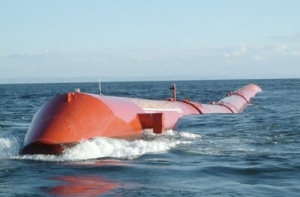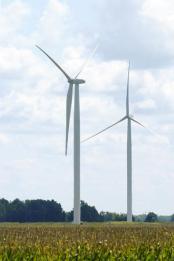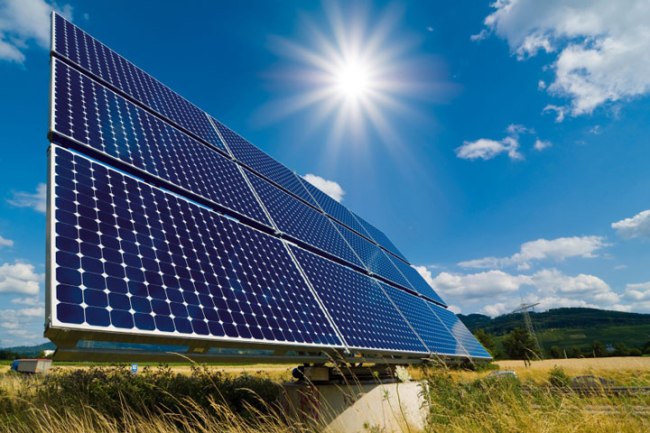Last week I posted a list of the 5 Countries that produce the most renewable energy. Not suprisingly, the countries on the list tended to be large countries that also consumed the highest amounts of electricity. In fact, three of the countries on the list were also in the top 5 Coal consumers.
While it is definately worth recognizing those countries for increasing the amount of renewable electricity generation in their country and worldwide, I thought (and readers agreed) that we should take a look at which countries produce the largest portion of their electricity from renewable sources. In this way, we can see which countries have invested the most in setting up a sustainable energy future, regardless of size. So, with that I give you the Top 5 Renewable Energy Producer’s by Percentage:
note: This ranking was tough to determine, based on several different sources, with different classifications of renewable energy, different data sets, and different publish dates. So if you disagree with a ranking, or think that I left out a country, comment and let me know!
We’ll start with #5 and count down in order to create some suspense.
#5. Germany
It shouldn’t come as a surprise to any to see Germany make this list, with their declaration in 2011 that they will close all of their nuclear power plants by 2022. Germany has become the worlds largest producer of solar power, while diversifying their energy portfolio with large portions of wind and biomass electricity as well. As of 2011, Germany generated roughly 20% of their electricity from non-hydro renewable energy, 8% from wind, 8% from biomass, and 3% from solar. Since then, the country has expanded solar production to account for close to 10% of their average annual electricity needs!

via csmonitor.com
Germany has acheived this through agressive subsidies and ‘feed in tariffs’, and it hasn’t been without criticism, but it certainly shows the country’s commitment to renewable energy and has made them a leader.
#4. Spain
Spain has become one of the world leaders in wind power, and recently set the world record in wind electricity production. In 2011, renewable energy accounted for 22.3% of Spain’s electricity production, with 15% coming from wind (now more like 20-25%), 3% from solar (now 5%) and 2% from biomass.

via nytimes.com
These recent increase could have placed them higher on the list, but the other entrants have been increasing the renewable portfolios as well. It should be noted that Spain has added to their significant debt problem in building this infrastructure, but has also made strong investments for the future and placed them near the front of the pack for clean energy generation.
#3. Portugal
Portugal is another heavy hitter when it comes to wind production. In 2011, wind accounted for 20% of the country’s electricity, added to biomass (5%), and some solar and wave production as well to bring their total renewable production to 25.3% of their electricity portfolio.

Wave Farm in Portugal
via inhabitat.com
Portugal had good reason to diversify their electricity generation: In the past, the country depended on hydroelectricity for over half of their energy, but the output of those facilities varied greatly due to droughts.
#2. Iceland
Iceland is well known for its commitment towards sustainable practices, and has made good use of their unique resources. The country is blessed/cursed with large amounts of volcanic activity (Eyjafjallajökull anyone?) that give the small island vast amounts of geothermal potential. They harness this heat to produce steam and turn their generators, creating a whopping 26% of their electricity.

Eerie geothermal plant in Reykjavik
via nationalgeographic.com
Iceland might just have the most renewable energy production in the world when you take into account that they use the same geothermal resources to heat almost all of their homes. If you count hydroelectricity, then the country is 100% renewable. Not every country has the ability to harness geothermal the way Iceland does, but they are sure making the most of it!
and the country that gets the largest portion of their electricity from renewable sources is….
#1. Denmark
Denmark produces nearly half of their electricity from renewable sources (45%), making them the leader in renewable energy by percentage. 30% of their power comes from wind alone, and another 15% from biomass. They aren’t stopping there either: the country plans to get half of their power from wind alone by 2021.

Offshore wind farm in Denmark
via dvice.com
Denmark is demonstrating to the world that wind power can in fact be a significant portion of a country’s electrical production. By making use of offshore wind farms, there are reducing some of the land requirements and tapping offshore resources as well!
So there you have it. Notice anything about the list? All but one of the countries in the top 5 are European Union members. That is due in large part to the European Commision’s goal of getting 20% of all power by 2020. (20 by 2020, catchy.) As you can see, these five countries are already well beyond that goal, and helping to raise the average of their fellow EU members. Another factor that can’t be ignored, however, is the fact that Europe has been dealing with much higher fossil fuel prices than other areas such as North America, and have much more incentive to embrace alternative energy sources. As I mentioned, some of these countries have incuured significant debt in order to make these developments feasible, which can serve as a warning to others. But, it’s also important to note that the citizens of these nations are willing to take on sometimes additional costs in order to make a major dent into the region’s carbon emmisions. Let these countries serves as examples for the rest of us!
Sources:
http://en.wikipedia.org/wiki/Wind_power_in_Germany
http://www.dvice.com/2013-4-2/25-percent-denmark-now-powered-exclusively-wind
http://en.wikipedia.org/wiki/Geothermal_power_in_Iceland
http://environment.nationalgeographic.com/environment/global-warming/geothermal-profile/
http://www.renewablesinternational.net/spain-sets-record-for-wind-power-production/150/537/60321/
http://ec.europa.eu/energy/renewables/index_en.htm
Related articles
- Wind power puts Iceland on the renewable energy map (icenews.is)
- Which Countries Use the Most Renewable Energy? (rethinkrenew.wordpress.com)
- Who’s leading – and who’s lagging – in the global renewables race? (reneweconomy.com.au)


![german-flag[1]](https://rethinkrenew.files.wordpress.com/2013/05/german-flag1.png?w=243&h=146)
![spain-flag[1]](https://rethinkrenew.files.wordpress.com/2013/05/spain-flag1.gif?w=240&h=160)
![Chinese_flag[1]](https://rethinkrenew.files.wordpress.com/2013/05/chinese_flag1.jpg?w=240&h=160)
![Flag_of_Brazil.svg[1]](https://rethinkrenew.files.wordpress.com/2013/05/flag_of_brazil-svg1.png?w=240&h=168)






